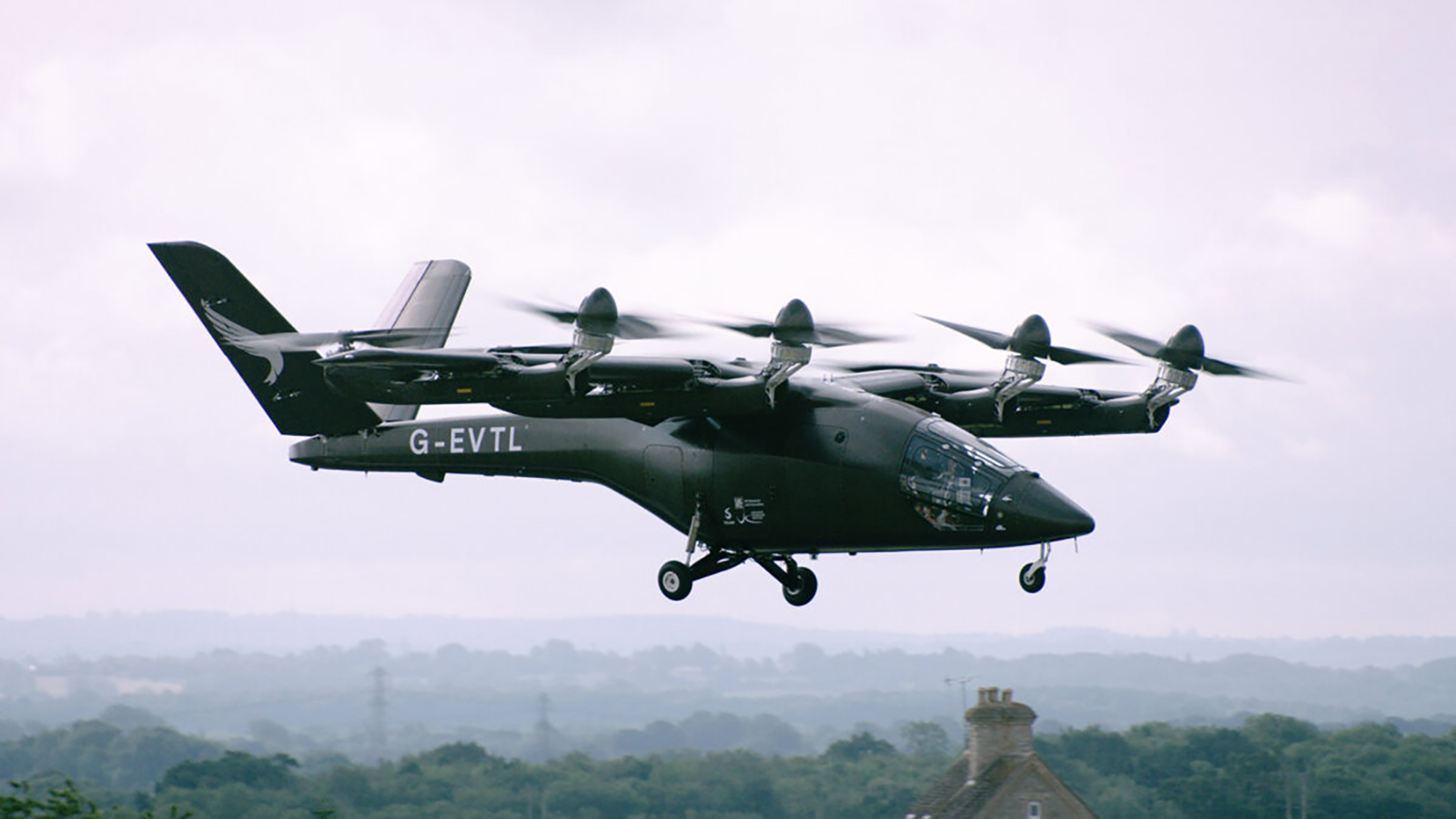Stay Up to Date
Submit your email address to receive the latest industry and Aerospace America news.
Company targeting 2024 for tests flights with a second prototype
British air taxi developer Vertical Aerospace announced today that the crash earlier this month of its air taxi prototype was due to “a fault with a propeller” that the company has already redesigned for its next prototype.
Vertical’s all-electric VX-4 prototype crashed Aug. 9 during a remotely piloted test flight at the company’s Flight Test Centre at Cotswold Airport in England. Today, Vertical said in a press release that it concluded in an internal investigation that an unspecified “bonding issue within” the blade of one of the VX-4 propellers caused the aircraft to lose thrust. The company has submitted this finding in a report to the U.K. Air Accidents Investigations Branch.
Vertical said it does not expect the crash to affect its development timeline. Prior to the crash, the company redesigned the propellers for the second VX-4 prototype, which is being assembled in preparation for test flights targeted for “early 2024,” according to the press release. Also, Vertical said it had planned to retire the first VX-4 after the August tests, which were described as a follow-up to “thrustborne” test flights in July to “understand how the aircraft performed outside of its expected operating conditions.”
Vertical aims to receive type certification for the VX-4 in 2026, and said that target remains “unchanged” by the crash. The VX4 is a lift-plus-thrust electric craft, meaning four rotors arrayed along the trailing edge of the 15-meter-wide main wing provide only lift and are halted and stowed aerodynamically for forward flight, while four rotors in the front tilt for forward flight. The aircraft has a pilot cockpit area and a seating area for four passengers.
About paul brinkmann
Paul covers advanced air mobility, space launches and more for our website and the quarterly magazine. Paul joined us in 2022 and is based near Kennedy Space Center in Florida. He previously covered aerospace for United Press International and the Orlando Sentinel.
Related Posts
Stay Up to Date
Submit your email address to receive the latest industry and Aerospace America news.




